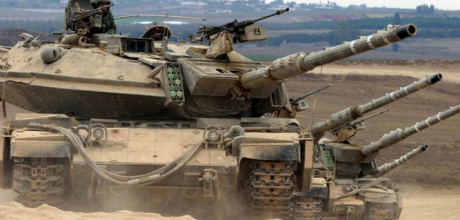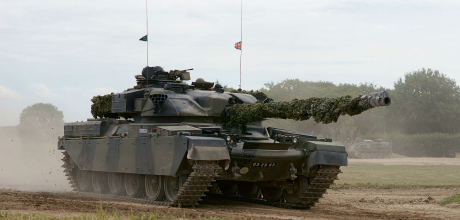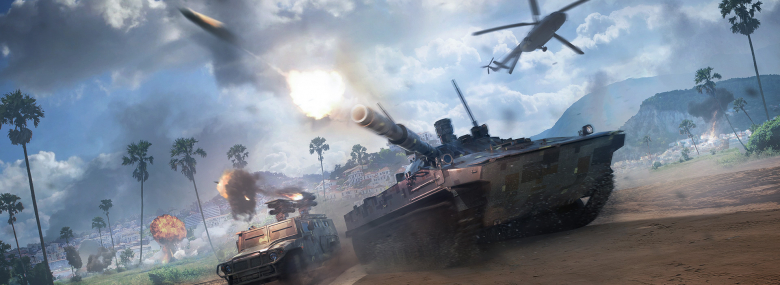
Commanders!
The Centurion tank (known under the name Sho’t – Hebrew for “whip”) holds a special place in the Israeli armor history next to such iconic vehicles as the M50 and M51 (commonly known under the name “Super Sherman”). It’s not just that it’s a solid, well-performing tank, but also the fact that it was available when the Israelis needed tanks the most and helped in winning many a tank battle.
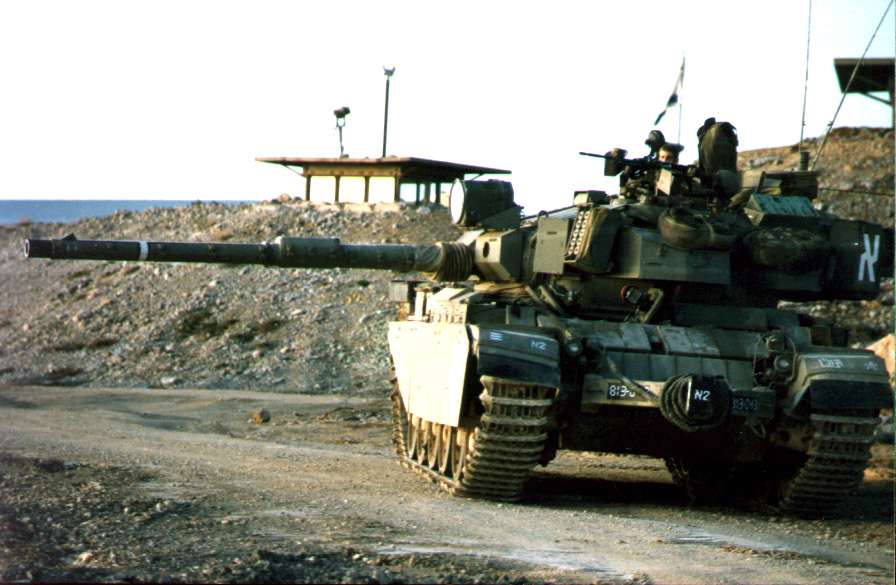
Sho't Kal Dalet
The Centurion was originally a British tank (if the name that starts with the letter “c” doesn’t give it away) and a result of the search for what was referred to as a “universal tank.” Before the Second World War as well as during the conflict, the British were basically dividing tanks into two distinct categories – cruiser tanks and infantry tanks.
The Cruiser Tanks were an equivalent of the cavalry of old. Lightly armored and fast, they were intended to exploit front breaches and to wreak havoc behind enemy lines as well as to encircle enemy units. The Infantry Tanks, on the other hand, were their polar opposite – slow (often they could barely move beyond walking pace) but incredibly heavily armored, these were built to withstand punishment and to provide cover for the accompanying infantry.
This approach, while logical in the context of the era, was flawed in many ways with the British producing a number of rather peculiar machines during the war – not outright bad ones, mind you, but some, like the Churchill, could definitely be considered a throwback. But, over the course of the war, the Cruiser Tanks gradually became better armored (resulting in the Cromwell and the Comet, one of the best tanks of the war), while the Infantry Tanks mostly disappeared with the end of the fighting. The aim of these changes in design was obvious – to have a tank that could fill either role, or a “universal tank” if you will.
That, of course, is an oversimplification of the matter – in reality it took quite some time for the changes to set in and the new vehicle wasn’t instantly available either. In fact, the demands for this “universal tank” were formulated as early as in the October of 1943 and were only finalized in mid-1944. At this point, the vehicle was referred to as the “A41 Heavy Cruiser” – notice the Cruiser Tank legacy in the name.
The first prototype of this tank was finished in the April of 1945 and, performance-wise, it wasn’t that far off from the Panther – it weighed some 46 tons, was powered by a 650hp engine and had 76mm thick frontal armor angled at 57 degrees (compared to Panther’s 80mm at 55 degrees). The turret front was some 150mm thick and it was armed with the famous British 17pdr (76.2mm) tank gun.
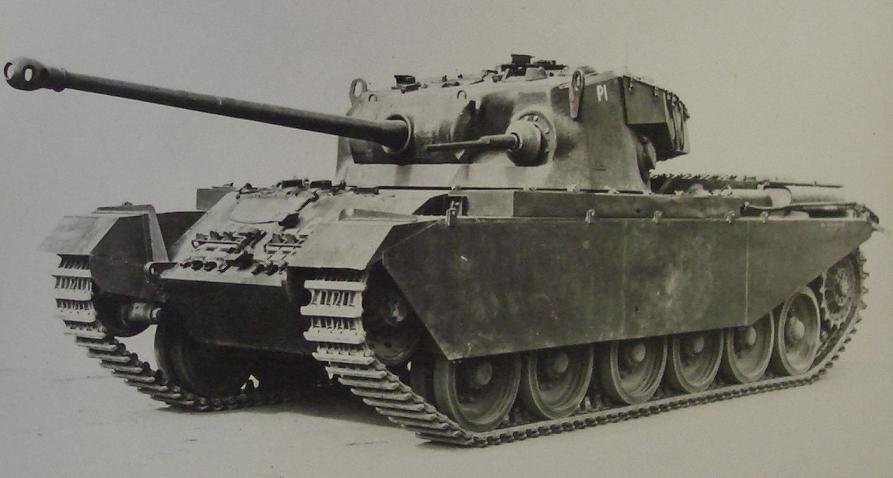
Centurion Mk.1
It’s worth noting that one of the most distinctive features of the earliest Centurions was its turret-mounted 20mm Polsten gun operated by the vehicle’s loader (intended to fight enemy anti-tank guns), but it would be ditched quite fast in the production models since it was considered to be too big a distraction for the loader and a coaxial machinegun was deemed sufficient for the task.
Uncharacteristically for any armor development, the first prototypes of the vehicle performed remarkably well and were devoid of serious issues, leading to the decision to actually deploy them in Europe. They arrived shortly after the war on the continent had ended.
The tanks were received positively, leading to a production order of the first of 800 Centurion tanks, 200 of which were supposed to be of the early 17pdr gun variant while the rest were supposed to be armed with a rather larger gun called Ordnance QF 20-pounder (just like the 17pdr, the name came from the weight of its ammunition) with the caliber of 83.4mm.
The Centurion production started in the November of 1945 with the first vehicles delivered in the February 1946, starting a production run of over 4000 vehicles delivered between 1946 and 1962. Starting from the early 1947, the production Centurions were armed with a 20pdr gun (Centurion Mk.3) and, starting from 1959, the legendary 105mm L7 (Centurion Mk.5/2 and newer).
But, let us return for a while more to the early 1950s and the original Centurion Mk.3 that was in production at that time – and one of the defining conflicts of the early days of the Cold War, the Korean War.
The North Korean forces of the 1950 were nothing like today’s ridiculous mish-mash of obsolete equipment with missiles strapped on it, commanded by a funny-looking fat man. Quite the opposite – they were a well-trained and well-armed force backed by the Soviet Union and the People’s Republic of China both. Their armored units consisted of a large number of T-34/85 tanks, badly outperforming the older American Shermans. While the U.S. Army deployed their own M26 Pershing tanks, the British, answering the U.N. call for action, sent their Centurion Mk.3 tanks (8th King’s Royal Irish Hussars).
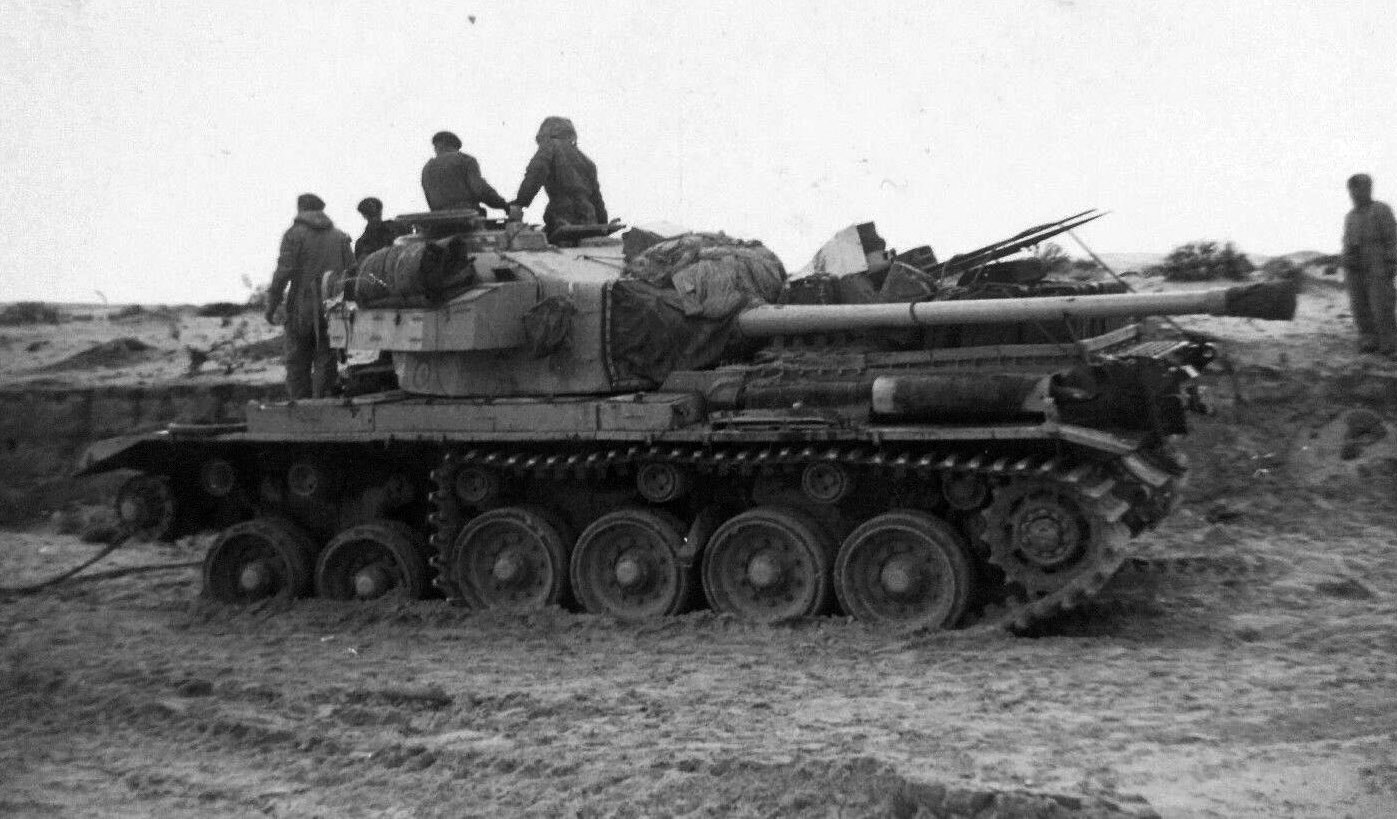
Centurion Mk.3
The Centurions performed reasonably well in Korea and were praised by the infantry they spent most of their time supporting. Their 20pdr guns provided highly accurate fire and the vehicles themselves demonstrated excellent off-road capabilities when they managed to get to a number of positions that were difficult to access for other tanks. The extreme winter weather, however, caused numerous technical issues and breakdowns. Regardless of this fact, the deployment was deemed a major success and established the excellent reputation of this tank.
The second active combat operation the British Centurion tanks participated in was, however, far closer to Israel and the topic of this article as the tanks were deployed to Egypt as a part of Operation Musketeer.
Operation Musketeer was a code name for the joint British and French endeavor to restore international control of the Suez Canal that Egypt attempted to nationalize. On the British side, three Royal Tank Regiments were deployed with 45 Centurion Mk.5 tanks, landing in Port Said on November 6, 1956.
These were, once again, 20pdr Centurions. Weighing a little over 50 tons, they were neither the most armored nor the fastest tanks on the battlefield. Their frontal hull armor consisted of 76mm of sloped steel while the turret front was 152mm thick. They were powered by 650hp Rolls-Royce Meteor engines, allowing them to go as fast as 35 km/h (but the off-road speed was more like 25 km/h). Their guns were, on the other hand, fully capable of defeating anything the Egyptians could throw at them at that point.
Some limitations of the Centurions were discovered during the fighting – specifically, the fact that the coaxial Browning machineguns that were installed in the turret could not sufficiently elevate to engage targets firing from third stories or rooftops.
Israel actively participated in the Suez Crisis in cooperation with the British and the French, achieving some incredible military successes for an army that wasn’t even a decade old. Cooperation is indeed the right word for the relations between the British and Israel as the British haven’t forgotten the circumstances under which Israel was born and were basically only perusing their own interests, occasionally attempting to throw the Israelis under the proverbial bus.
However, the relations between the two nations thawed considerably after the end of this operation to the point where Israel was allowed to purchase a number of Mk.5 Centurion tanks two years later with the first ones arriving in the December of 1958 (16 used Mk.5 and 14 new Mk.8). Sixty more used Mk.5 tanks were purchased in the May of 1960. These early Centurions were, according to some sources, referred to as “Ben Gurions” in honor of David Ben-Gurion, but other sources attribute them to the early Sho’ts and some sources claim that the name never existed.

Sho't
Contrary to what one might expect from their combat performance in the wars that would come, these early Centurions didn’t initially obtain a good reputation. Simply put, these were considerably more complex machines than the earlier Shermans and other vintage models, making proper training and maintenance critical. However, at that time, the IDF had a problem – large number of its troops came from the ranks of Sephardic Jews. Compared to their Ashkenazi counterparts, they generally suffered from lower education levels and were not adequately prepared to deal with the Centurion.
As a result, improper maintenance and poor training resulted in high breakdown rates, which in turn led to the Israeli troops practically despising the Centurion. This situation only changed in the mid-1960s when, under General Israel Tal (commander of the armored forces), a rigorous training program was established, resulting in the IDF armor units turning into one of the best in the entire world.
The second important ingredient to the later success of the Centurion was the retrofit of the original 20pdr gun with the new British 105mm rifled L7 (which was added to the Centurion in 1959). This gun was conceived in the mid-1950s as a T-54/55 killer, a job, as it turned out, it was remarkably good at. Many of the Israeli 20pdr Centurions were re-armed with this weapon starting from the October of 1961. By the time the Six-Day War erupted in 1967, Israel had 385 combat ready Centurions of both kinds. The re-armament program was finished three years after the war, in 1970.
The Six-Day War was another astounding success for the IDF and even though much of it is traditionally attributed to the Israeli Air Force, Tal’s armored units were also performing very well. The Israeli Sho’t tanks along with the M48s (referred to as Magach) achieved amazing results in the face of numerically superior and dug-in enemies. The Sho’t in particular turned out to be extremely resilient and capable of fighting even after taking serious damage.
By the end of the war, however, it was clear that the decade-old Centurions already had worn out engines and were in dire needs of upgrades.
The engine was the first element to be replaced. After some deliberations, the Israeli Ordnance Corps (led by Colonel Israel Tilan) picked a powerplant that was also compatible with their upgraded M48s – the Continental AVDS-1790-2A 29.36 liter 750hp 12-cylinder supercharged diesel with Allison CD-850-6 automatic transmission replacing the older Meteor engine. The engine was a bit too large for the Centurion hull, which is why the engine bay had to be enlarged, resulting in a visible engine deck “hump”.

Sho't Kal
The introduction of this engine significantly improved the tank’s mobility, increasing the maximum speed to some 50 km/h with the fuel economy (and thus operational range) improving considerably as well.
And there were further considerable improvements:
- Applique upper frontal plate (where it was missing), increasing the armor thickness to some 118mm
- Replacing the 20pdr gun with the L7 105mm (where applicable – the gun was license-produced under the name “Shrir” in Israel)
- Modern Fire Control System
- Ammunition capacity improved to 72 rounds (with more shells readily available to the gunner)
- Significantly improved compartmentalized fuel cells
- Improved oil-cooled braking system
- Improved engine fire extinguishers
- Improved steering (reducing the original turn radius of 40 meters to 13 meters)
- Improved crew compartment (for example, the loader’s seat rotated with the turret)
- New electrical system
- The old radio was replaced by a new American set, compatible with the M48
- Additional stowage boxes on the right rear fender
- Large stowage basket on the back of the turret
Other minor improvements included:
- A number of extra stowage boxes around the vehicle
- M48-style headlights
With these upgrades, the vehicle became known as “Upgraded Centurion” or Sho’t Kal. The “Kal” name is a shortcut of “Continental” (the Sho’t tanks with their original engines are thus referred to as “Sho’t Meteor”). It is also referred to as “Sho’t Kal Alef.”
It entered service in the May of 1970 following some considerable delays due to a number of American trade obstructions. Nevertheless, by 1972, over 700 Sho’t Kal Alef tanks were in service (most originally bought from England and converted in Israel).
The judgment day for the Israeli Centurions (and its army in general) came on the 6th of October, 1973, when the Egyptian and Syrian armies invaded during what became known as the Yom Kippur War. In the south, the Israeli tanks were hammered by volleys of Malyutka missiles fired by both infantry teams and the Soviet-supplied BMP-1s, resulting in heavy losses. In the north, some 177 Sho’t tanks of the 7th Armored Brigade under Avigdor Ben-Gal and the 188th “Barak” Armored Brigade faced as many as 1200 Syrian tanks (including the deadly T-62), pouring at them via the Golan Heights.
The battle that ensued became legendary and greatly contributed to the later reputation of the Centurion tank. The Israelis were losses were extreme – one tank lost five commanders within a day and still its crew fought on. At night, the frontline dissolved into chaotic battles between individual tanks. One of the most prominent heroes of the northern theater of war was Zvika Greengold, whose Centurion knocked out dozens of Syrian tanks, a feat unheard of since the Second World War.
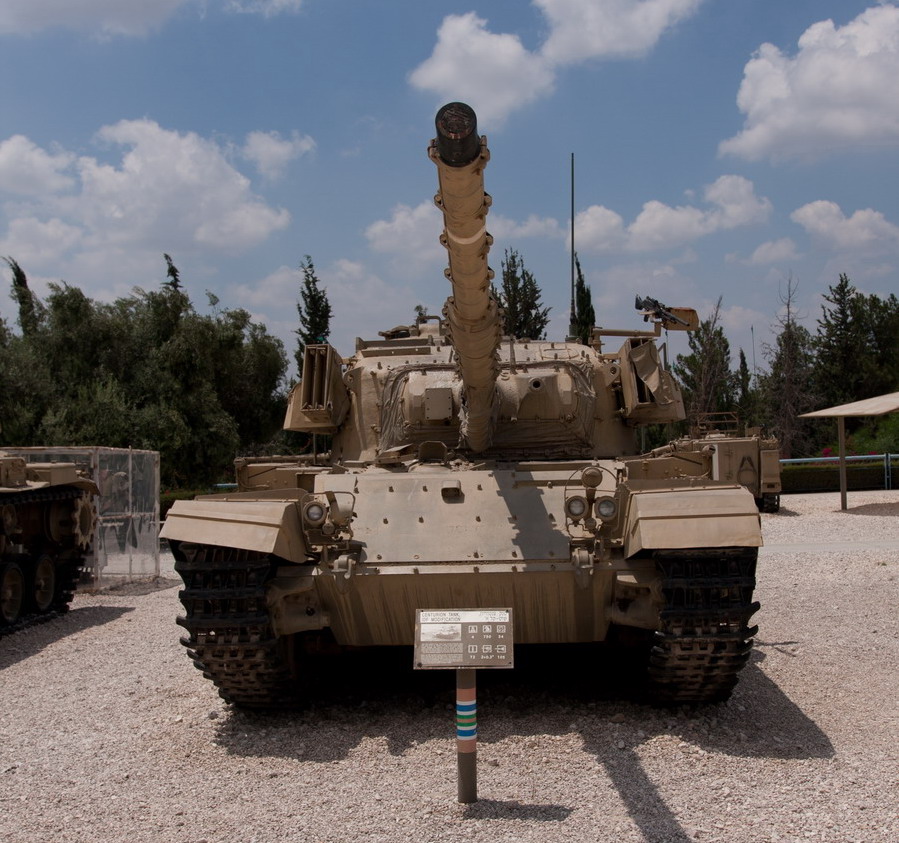
Sho't Kal Gimel
The Israeli tanks prevailed but at a terrible price. By the time the fighting was over, more than five hundred Syrian tanks were left destroyed on the battlefield, but practically every original Israeli Golan Heights unit tank was either destroyed or damaged as well with every tank during the conflict being statistically hit three times by various calibers on average. It is no overstatement to say that the brave crews of Israeli Sho’t tanks saved the country from annihilation that was openly declared by the invading Arabs.
In the end, despite these successes and their survival, the Israelis had to face a grim reality. The Centurions were obsolete. Like the M48, it was extremely vulnerable to Soviet-made HEAT-based weapons such as the RPG series or the Malyutka ATGMs. The Sho’t was also quite vulnerable to the kinetic rounds fired from T-62’s 115mm smoothbore gun that, according to eyewitness accounts, could penetrate the turret mantlet, pass through the entire tank, penetrate the rear of the turret as well and exit the vehicle. Hits to the frontal ammunition stowage also typically caused internal explosions.
The high losses of the Yom Kippur War helped accelerate a new Israeli tank project that would result in the Merkava, but, in the meanwhile, the Israelis continued to upgrade the Sho’t to make it more resistant to the abovementioned threats.
The first post-war upgrade was the 1976 Sho’t Kal Bet, featuring hydraulic turret traverse, followed by Sho’t Kal Gimel, the most distinctive feature of which was the Blazer Explosive Reactive Armor.
Appearing in the late 1970s, the Blazer was the first ERA kit to be operationally used by any army. It was actually developed by a German, Dr. Manfred Held, who patented his first ERA kit as early as in 1970. After failing to persuade the NATO to adopt his designs, Dr. Held (who performed some on-site research in Negev following the Six-Day War) returned to Israel in 1974. Based on his designs, the company Rafael developed the Blazer that was first used in combat in 1982.
All things considered, the Blazer kit was a significant improvement even if it left a lot to be desired for. It was quite effective against Malyutkas and RPGs, reducing the penetration of RPG-7 warheads from 300mm to some 100mm of steel (although the results vary heavily on circumstances).
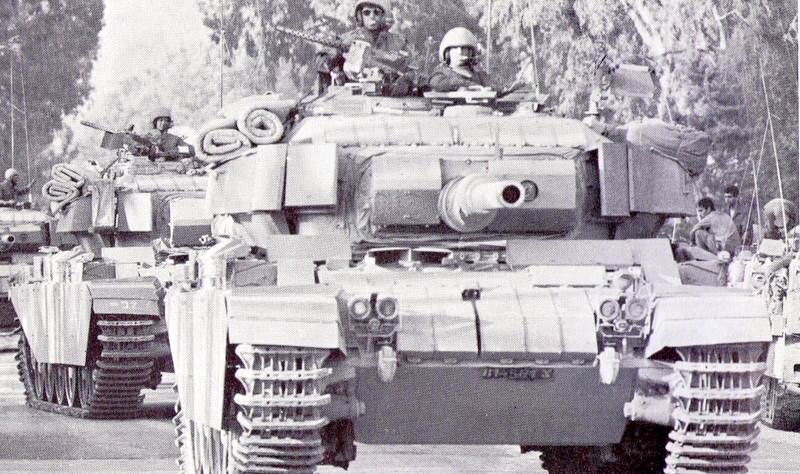
Sho't Kal Dalet
By the time of the 1982 Lebanese intervention, the Merkavas were already replacing the Centurion tanks in combat service, but were still available in limited numbers and the Blazer-equipped Patton tanks (Magach) and Sho’ts were still more numerous. Other Gimel improvements compared to the Bet version included:
- Gun thermal sleeve (locally produced by IMI)
- Honeywell gun stabilizer (sometimes listed as a whole upgraded FCS)
- Improved smoke dischargers (the boxy canisters next to the mantlet)
Following the 1982 conflict experience, the final production version called Sho’t Kal Dalet rolled out in 1984, featuring:
- Further improvements to the Fire Control System, including a new laser rangefinder
- Blazer ERA support (different configuration than the Gimel)
But the heyday of this tank was over and the Sho’ts continued to disappear from service, being replaced by the superior Merkavas. The Sho’t was officially retired as a combat tank in 2002. Starting from the 1970s, the obsolete Sho’t tanks were either scrapped, or converted to specialized vehicles such as the Nagmasho’t heavy APC. The Israeli Sho’t conversions are covered in our dedicated article.
In Armored Warfare, the Sho’t Kal Dalet will be an Israeli Branch Tier 3 Progression Main Battle Tank featuring many of the later real life upgrades such as the Blazer Explosive Armor Kit, making it one of the earliest ERA users in the game. It won’t be fast due to its weight, but it will be accurate in order for it to be able to continue the IDF tradition of engaging its targets at long distances.
We hope that you will enjoy it and will see you on the battlefield!




